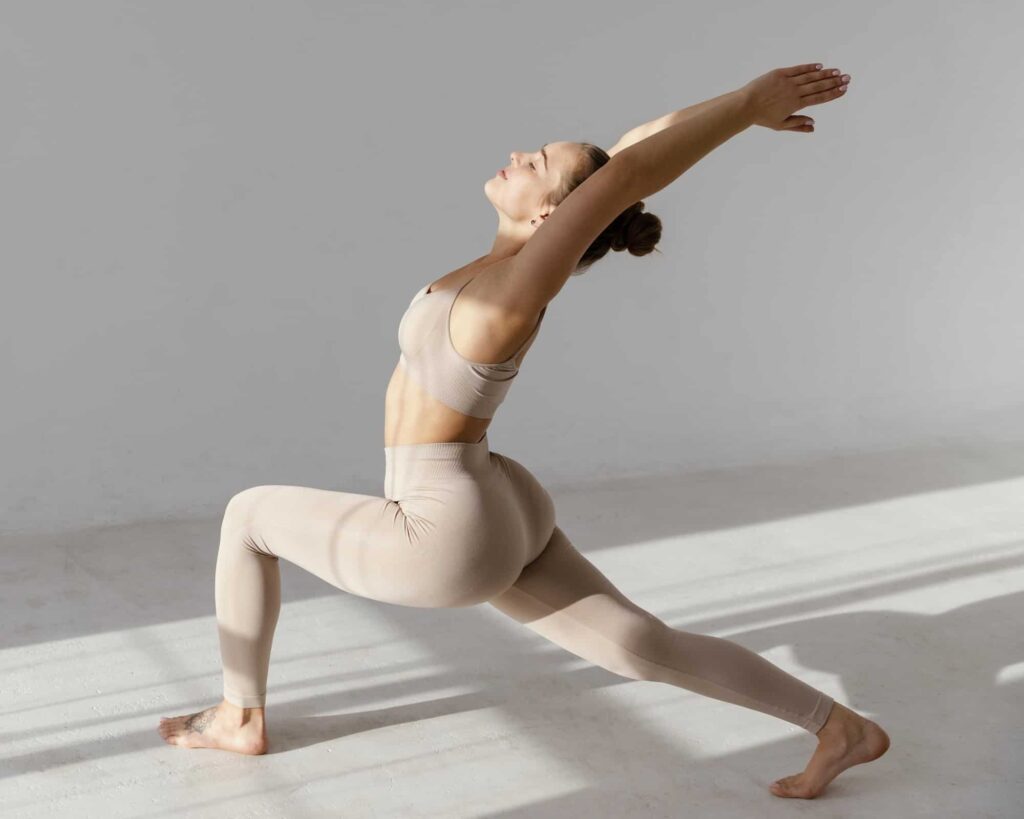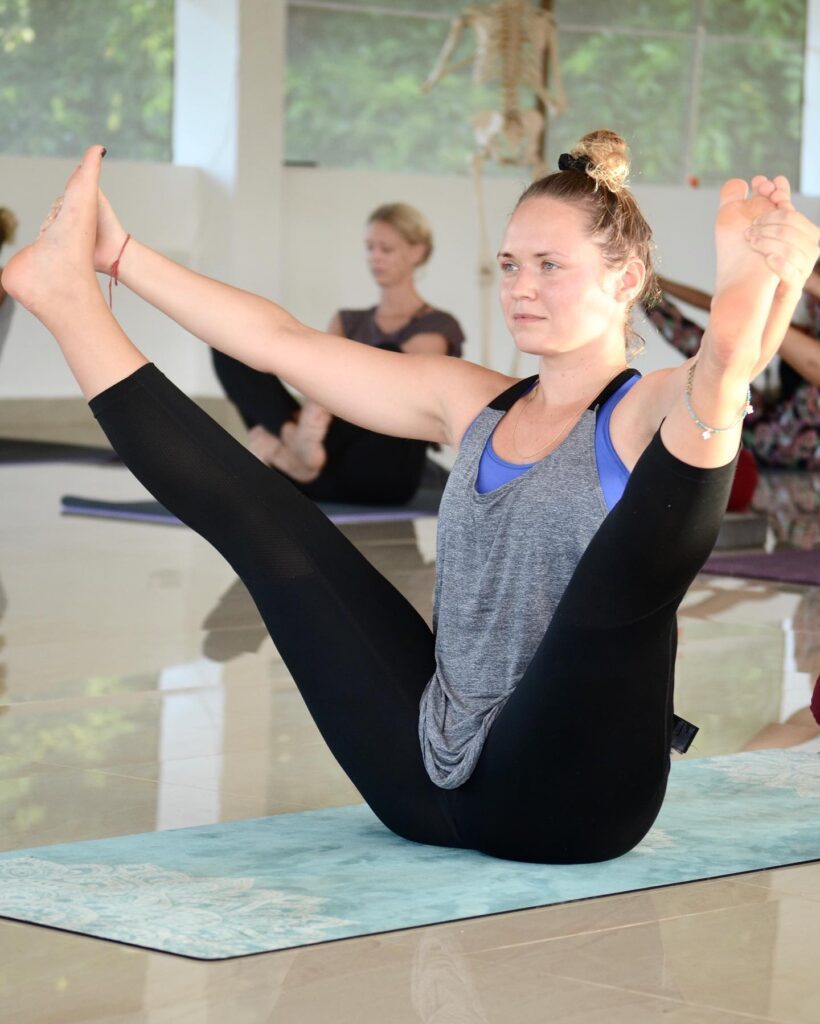The Art of Yoga Sequencing

One of the key skills required as a yoga teacher is the sequencing of a yoga class. When sequencing a yoga class, there are a variety of factors to take into account. Spinal mobility, the particular theme and energetic effect you are trying to cultivate in a class, the style of yoga you are teaching, and modifications based on the demographic you are teaching are all different components to consider when sequencing a yoga class. The art of sequencing is key to unlocking transformative experiences for students and is an essential component of any 200 hour yoga teacher training in Bali. By articulating intelligent yoga sequences, you have the capacity to help the individual harmonize the body, mind, and being.
A well-structured vinyasa yoga sequence includes a warm-up that progresses into more dynamic and potentially challenging postures and winds down with more gentle postures that focus on mobilizing the areas that have been dominantly activated throughout your sequence. Learning to create this energetic arc in a yoga class is central to any vinyasa teacher training in Bali. For example, if your vinyasa sequence involves multiple Warrior poses and/or poses that require balancing on one leg such as the Eagle pose, winding down the class with a pose such as Pigeon or Gomukhasana that mobilize the stabilizing muscles of the outer hip region that has been strengthened throughout class would be appropriate. While vinyasa yoga is a dynamic practice, ensuring there is ample time to warm up and cool down the body is essential in creating a safe class that minimizes the likelihood of injury.
A vinyasa yoga teacher training in Bali will teach you the importance of mobilizing the spine in all six directions when sequencing a yoga class. While the class may favor mobilizing the spine in one or two of these directions, i.e. twisting or backbends, a well-rounded class will mobilize the spine in all planes of movement to cultivate energetic balance. These six directions are spinal flexion and extension, lateral flexion and extension, and spinal twisting. Each direction of spinal mobility is associated with a different energetic effect. Backbends and side body mobility spinal extension and lateral flexion and extension, are more uplifting and invigorating in nature, while spinal flexion and twisting are more grounding and calming in nature. By mobilizing the spine in all directions, a balanced and centered energetic effect is cultivated.
The art of sequencing a yoga class extends beyond the arrangement of postures. It requires not only stringing together a series of asanas, pranayama, and potential meditations but also the awareness to modify a practice when needed. There will be times when you will be teaching a class and your instruction and/or the sequence you had planned is not landing for the practitioners in your class. Cultivating self-awareness and awareness of others will help you recognize this. With ample education on yoga sequencing, you should be able to recognize what is not working for your students and modify it accordingly in a way that is in alignment with the themes of the class. By recognizing the unique needs and abilities of students, you are able to modify a class when needed- making yoga more accessible and beneficial for all.
Last but not least, one of the keys to sequencing a yoga class is language. The vocabulary you use when teaching a yoga class has the power to drastically impact the experience of your students. By using meditative, contemplative, yet approachable language, a deeper sense of connection and presence can be established. However, the exact language you use will be unique to you, and most importantly, authentic to you as the teacher. Finding your unique “voice” as a yoga teacher sets 200 hour yoga teacher training in Bali aside from other training. On their training programs, you will not only learn the ins and outs of sequencing a yoga class but also how to make your expression of that yoga class authentic to you.
The Transformative Journey: 200 Hour Yoga Teacher Training in Bali
Bali, known as the Island of the Gods, is a haven for yoga enthusiasts seeking a serene and spiritual environment to deepen their practice. The 200 hour yoga teacher training in Bali has become a sought-after program for individuals aspiring to become certified yoga instructors or simply looking to deepen their personal practice. This immersive experience offers a comprehensive curriculum, experienced instructors, and a unique cultural backdrop that sets it apart from other training programs worldwide.
The Significance of 200 Hour Yoga Teacher Training in Bali
Understanding the 200-Hour Certification
The 200 hour yoga teacher training in Bali is a foundational program recognized globally by the Yoga Alliance, which is the standard-bearer for yoga teacher certifications. It provides a comprehensive understanding of yoga philosophy, asanas (postures), pranayama (breath control), meditation, anatomy, and teaching methodologies.
Building a Strong Foundation
This program is designed for individuals of all levels, from beginners to advanced practitioners. It aims to build a strong foundation in yoga, allowing participants to develop a well-rounded practice and, for those seeking certification, the ability to teach confidently.
The Unique Bali Experience
Ubud: The Heart of Bali’s Yoga Scene
Ubud, located in the heart of Bali, is renowned for its lush landscapes, serene rice terraces, and a thriving yoga community. The tranquil atmosphere and natural beauty of Ubud provide an ideal backdrop for an immersive yoga teacher training experience.
Cultural Immersion
Bali’s rich cultural heritage and spiritual traditions infuse every aspect of the training. Participants have the opportunity to engage in cultural activities, such as temple visits, traditional ceremonies, and encounters with local artisans, which deepen their understanding of yoga beyond the physical practice.
Balinese Philosophy and Yoga
The Balinese culture emphasizes harmony with nature, self-awareness, and a strong sense of community – all of which resonate deeply with the philosophy of yoga. This connection between Balinese values and yoga philosophy creates a unique and transformative experience for participants.
The Curriculum
Comprehensive Yoga Philosophy
The training delves into the philosophical foundations of yoga, including ancient texts like the Yoga Sutras of Patanjali and the Bhagavad Gita. These teachings provide a framework for understanding the spiritual and ethical dimensions of yoga.
Asanas and Alignment
Participants learn a wide range of asanas, with a strong emphasis on proper alignment and adjustments. Through daily practice and expert guidance, students develop strength, flexibility, and a deepened awareness of their bodies.
Pranayama and Meditation
Breath control (pranayama) and meditation are integral components of the program. These practices cultivate mindfulness, inner peace, and a heightened sense of awareness – skills that are invaluable both on and off the mat.
Anatomy and Physiology
A solid understanding of anatomy is crucial for safe and effective teaching. The training includes in-depth anatomy classes that focus on the musculoskeletal system, nervous system, and the subtle energy channels (nadis) of the body.
Teaching Methodology
Participants are equipped with the skills to lead classes confidently. They learn how to sequence a class, offer clear instructions, make adjustments, and create a supportive and inclusive environment for their future students.
Experienced Instructors
The success of any teacher training program hinges on the expertise and guidance of the instructors. Bali’s 200-hour teacher training programs often feature highly experienced and certified yoga teachers, many of whom have studied and practiced in India – the birthplace of yoga.
The Spiritual Connection
Bali’s deeply spiritual environment amplifies the transformative potential of the training. The island’s sacred sites, such as the Goa Gajah and the Tirta Empul temple, offer opportunities for self-reflection and spiritual growth.
Community and Networking
The training provides a unique opportunity to connect with like-minded individuals from around the world. Lifelong friendships are forged, and a supportive community is established – a valuable resource for both personal growth and future teaching endeavors.
Conclusion
A 200 hour yoga teacher training in Bali is more than just a certification program; it is a profound journey of self-discovery and personal growth. Against the backdrop of Bali’s natural beauty and rich cultural heritage, participants embark on a transformative experience that equips them with the skills and wisdom to not only teach yoga but to live it fully. This immersive program is a testament to the profound impact that the combination of exceptional instruction, cultural immersion, and a spiritually charged environment can have on one’s yoga practice and life journey.
Frequently Asked Questions (FAQ) on Yoga Teacher Training Certification (TTC)
- What is Yoga Teacher Training Certification (TTC)?
Yoga Teacher Training Certification, often abbreviated as TTC, is a comprehensive program designed to equip individuals with the knowledge, skills, and certification to teach yoga professionally. It typically includes in-depth study of yoga philosophy, asanas (postures), pranayama (breath control), meditation, anatomy, teaching methodology, and more.
- How long does a standard TTC program last?
A standard Yoga TTC program is often categorized into different levels based on the number of hours. The most common levels are 200-hour, 300-hour, and 500-hour programs. A 200-hour TTC program typically spans over 4-6 weeks, while the 300-hour and 500-hour programs are advanced and require completion of the preceding levels.
- Who can enroll in a Yoga TTC program?
Yoga TTC programs are open to individuals of all levels, from beginners to advanced practitioners. It is recommended, however, that participants have a consistent yoga practice for at least 6-12 months prior to enrolling in a 200-hour program.
- Is there an age limit for enrolling in a TTC program?
There is no specific age limit for enrolling in a TTC program. As long as individuals are physically and mentally capable of engaging in the intensive training, they can participate. Some programs may have their own eligibility criteria, so it’s advisable to check with the specific training center.
- What are the primary components of a TTC program?
A TTC program typically covers a range of topics, including yoga philosophy, asanas and alignment, pranayama and meditation, anatomy and physiology, teaching methodology, and often includes practical teaching experience.
- What is the significance of Yoga Alliance accreditation?
The Yoga Alliance is an internationally recognized organization that sets the standards for yoga teacher training programs. A Yoga TTC program accredited by the Yoga Alliance ensures that it meets specific criteria for content and teaching methods, and graduates are eligible to register as certified yoga instructors.
- What are the benefits of attending a Yoga TTC in a location like Bali?
Training in a place like Bali offers a unique and enriching experience. The serene environment, rich cultural heritage, and spiritual ambiance contribute to a transformative journey. Bali’s natural beauty and vibrant yoga community create an ideal backdrop for intensive learning and personal growth.
- Can I teach yoga after completing a 200-hour TTC program?
Yes, completing a 200-hour TTC program qualifies you to teach yoga professionally. You’ll be equipped with the knowledge and skills needed to lead classes confidently. Many graduates go on to teach in yoga studios, fitness centers, wellness retreats, or even establish their own yoga practices.
- What can I expect in terms of cost for a Yoga TTC program?
The cost of a Yoga TTC program can vary widely depending on factors such as location, duration, amenities, and the reputation of the training center. On average, a 200-hour program can range from $1,000 to $3,000, but prices can be higher for renowned programs or those held in premium locations.
- How can I choose the right Yoga TTC program for me?
It’s important to research and consider factors such as the curriculum, teaching faculty, location, accreditation, reviews from past students, and your personal goals and preferences. Additionally, reaching out to the training center for any specific queries can provide you with a better understanding of what to expect.
Remember, embarking on a Yoga TTC journey is a deeply personal and transformative experience, and choosing the right program can greatly enhance its impact on your practice and your life.
Get in Touch
Yoga New Vision
Address: Jl. Raya Sanggingan No.36, Kedewatan, Kecamatan Ubud, Kabupaten Gianyar, Bali 80517, Indonesia
Contact: +6282145498596
Email: info@yoganewvision.com


